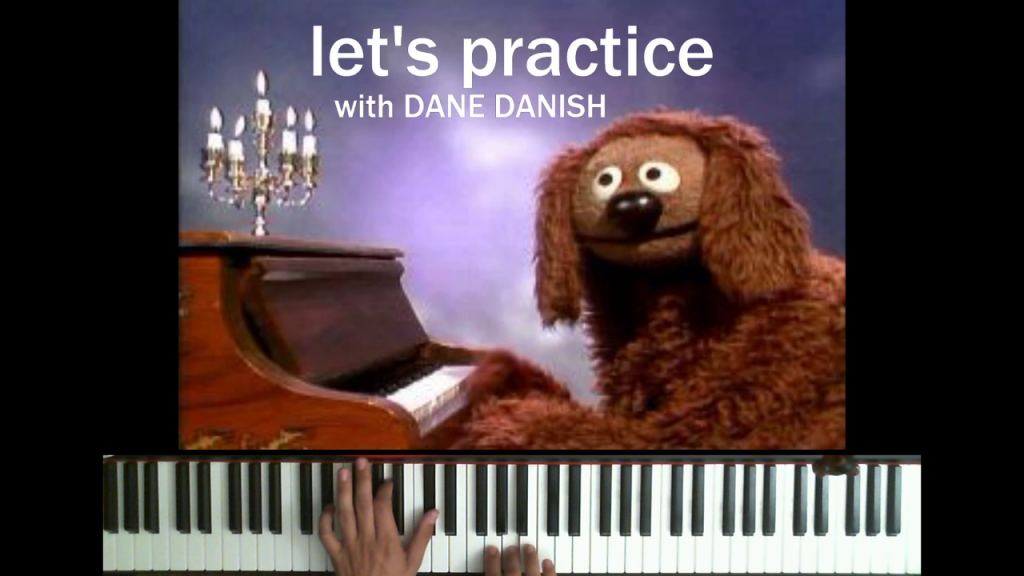
As a self-described “repentant pianist“, I’d long ago humored the idea of recording and posting every one of my piano practice sessions to a Youtube account. In the first place, recording practice certainly can be a useful tool in development, and in the second, I also fancied under the delusion that a channel which professed progress in spite of amateurism might gain traction with a few other repentant musicians out there. (At the core of many things I do is the desire to bleed publicly. Why else would I pay to keep this blog online?) In a distant third: vanity.
So in the summer of 2020, when my buddy Deeg suggested I stream my piano practice sessions, I first balked and then rapidly became compelled to try.
I indulged happily in the research and process of building a piano stream, and soon realized I could get this running with tools already in my kit. I always enjoy diving into a new program, and OBS Streamlabs did not disappoint. It afforded me the correct balance of micro-problems and slightly confusing settings that I turned soon into multimedia monkey business.
So, uh, how dis work? I already knew that in the worst case, I could feed my keyboard’s onboard audio straight into my interface, but I’d long since abandoned that tinny, crunchy sound in favor of the myriad delicious sample libraries for which I paid good money. (I <3 my Yamaha, though, and its beefy weighted keys.) I dared to wonder if I could take VST plugin audio direct from Reaper and run that to Streamlabs. (Yes, easily, thanks to Voicemeeter Banana.)
I had microphones a-plenty, and while singing was strictly off the table, the interactive aspect of live streaming certainly had an allure. I talk to myself on a daily basis, and ruminating out loud on my precise goals and immediate difficulties in the session was a nice way to keep my focus. Maybe even say hi to the errant stranger who’d wandered in, on the off-chance they were human. Anyway, it was no extra work to pop an SM58 in the interface and mount it on a boom stand.
Foremost, Twitch is a video platform, and though my operation was ramshackle, I couldn’t bear to play behind a black screen. Here my tools were limited: only one webcam for video capture (an old little thing at that) and my disposition to steal images from the internet. (Rowlf’s hard to beat, but had I continued the practice, I imagine I would’ve curated a nice gallery of keyboard-playing avatars in the rotation.)
If I’ve learned one thing watching Twitch streams, it’s that the people want a face. A video game stream presumably offers all the visual information one needs: a game, actively played. Yet the parasocial nature of the Twitch subscription model demands a human element. (Waifus notwithstanding.) (Not that I had any delusion that I would be doing this long enough to attract even insubstantial attention.)
Anyway, given the context, visual of the hands on the board felt vastly more important than my dumb-dumb monkey face (which, in concentration, just looks bored). Plus I worried that picking a particularly juicy booger on camera might violate Twitch terms of service. I confess I was tempted to buy a nicer, second camera to show both face and hands, but this being the summer of 2020, webcams were pretty scarce. No face.
In a later stream I experimented with a different angle, requiring me to pound two nails in the wall so I could mount the camera above the keys. Getting the angle right enough to capture all 88 most of the keys was a pain, and the ball-jointed webcam ensured that the result would not be easily reproduced.

Boy, that’s a lot of words I just made for what amounted to maybe a week of streams. I managed maybe three days in a row, with scattered individuals before and after. Once I’d solved the architecture of broadcasting a piano stream, I was satisfied with that alone. I did not expect an audience (Deeg obliged, naturally, and I think at least one actual human stranger did show up more than once), and I wasn’t interesting in growing one. I was only interested in the novelty. It was doable, certainly, but not easily reproduced. I begrudged the extra software and hardware steps that had become attached to practice. Yeah, yeah, I guess practice is supposed to be a sacred and solitary experience, anyway, but I’d chalk this up to technical laziness most of all. Given dedicated space and gear (and something a little better on offer than “let’s practice”) I could see me messing with this again.
Not that I’m holding my breath. I’ll leave the streaming game to those musicians more comfortable in the seat of their pants.
Me, I’ve made decent work of the offline practice. More on that later.